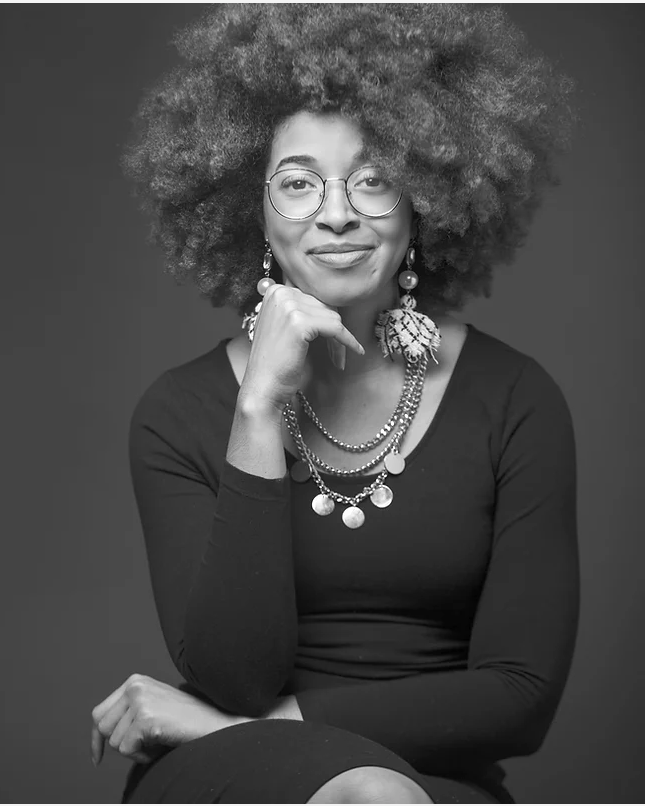Q&A Session with Social Justice Engineer, Maya E. Carrasquillo, Ph.D.
This Black History Month we celebrated by highlighting key figures of the past, present, and future in the Environmental and Engineering fields. Often times during Black History Month we tend to primarily honor heroes of the past, but we wanted to extend that same honor to those who are making their mark for future generations.
This is why we’re highlighting Maya E. Carrasquillo, Ph.D. for her pivotal work in Environmental Engineering. Dr. Carrasquillo is an “interdisciplinary trained environmental engineer focused on researching, educating, and implementing just and equitable solutions to address systemic issues connected to critical infrastructure in Black and Brown communities.” She is currently an Assistant Professor of Civil and Environmental Engineering at the University of California, Berkely.
We were privileged enough to get to know Dr. Carrasquillo and ask her a few questions about her work and how she got started.
Tell me a little about yourself!
“I was born and raised in Albany, NY. Our neighborhood growing up was on the fringes of the city's boundaries though, so we grew up with a lot of green space around and a large backyard. I spent most of my childhood outside and I think that was where I developed an affinity for the broader environment and understanding our relationship with it as people. I got into environmental engineering by doing a google search, admittedly. Not unlike most people who pursue engineering,
I excelled at (and really enjoyed) math and science growing up. I remember my high school biology teacher told me I should consider becoming a scientist or engineer- but I didn't know much about engineering because I had never been exposed to it. So when it came time to decide on what I would major in in college, in typical millennial fashion, I did a google search. And I was drawn to environmental engineering most of all because it reflected a sense of altruism and humanitarianism at its core- engineering for the health and well-being of people! This is what has always and continues to motivate me as an engineer.”
How did you get involved in Social Justice Engineering?
“When I was in undergrad at Georgia Tech, I was actively involved in several Black Student Organizations (BSOs) on campus, the Georgia Tech Society of Black Engineers and the African American Student Union. Through these organizations, I had an opportunity to engage more with the broader Atlanta community and GT's surrounding Black neighborhoods. But I was challenged by how disconnected my engineering curriculum was to the broader Atlanta community.
Although Atlanta has one of the largest and most thriving Black populations of any U.S. city, there was such a dissonance especially as a Black female engineering student, being on a campus that represented such prestige, privilege, and opportunity, and once we stepped off campus, being in a part of the city that has been characterized by poverty, limited power, and even oppression. That never sat right with me, and was a nagging feeling that made me want to explicitly explore the ways to bridge that gap- the gap that suggested that issues of race, power and justice couldn't be explored through engineering. So that is what motivated the initial spark for "social justice engineering" and when I went to pursue my PhD, I centered work with and for Black communities and that is still core to my research today.”
How do inadequate storm management practices affect African American communities?
“Historically, poorly designed and poorly maintained stormwater infrastructure has disproportionately affected Black and Brown communities. This has manifested in a variety of ways from higher flood risks, exposure to polluted water and disease vectors, and overall lower quality of life. Stormwater in my opinion can be treated as the awkward stepchild of water infrastructure because the negative consequences aren't as obvious as with drinking water or wastewater when practices are inadequate.
But stormwater infrastructure is just as critical because it is the infrastructure people are more likely to engage with outside of their homes- it's the infrastructure that can define a sense of place and community when done well, or that can detract from these positive features when done poorly. Because of this, addressing challenges related to stormwater requires us to go beyond the technical and consider the multiplicity of factors that affect the ways the same infrastructure can affect communities differently. Understanding history compounded with present-day climate risks, and the perspectives of the people we serve with stormwater infrastructure provides us an opportunity to pursue more equitable strategies for stormwater design in the future.”
“I work across sectors, disciplines and industries and focus on bridging connections, and gaps in current practices to re-imagine how we conduct engineering and to improve the quality of life in and with communities influenced by the systems we create. ”
Interact with us!






